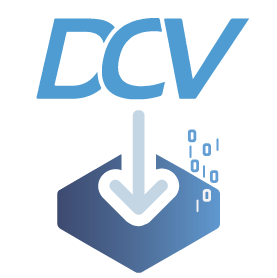Virtual machines are a convenient way to offer remote desktop to users but at the same time they waste resources. We explain how they waste resources and how DCV for Linux remote desktops offers resource- and cost-efficient usage of server hardware.
Why VMs are less efficient than shared systems and waste resources
We compare resource usage and usage pattern of virtual machines versus shared systems offered by Linux variants like RedHat, CentOS, Rocky Linux, Ubuntu, … with a focus on remote desktop sessions.
For every Virtual Machine additional CPU cores, disk space and memory is needed – Reources are multiplied by N
VMs come with their own requirements in terms of CPU power, memory, disk space. In order to run a VM, you need to allocate memory for the operating system and any applications installed in the VM. You also need to allocate disk space for the VM’s virtual hard drive. To run the operating system around 0.5-1 CPU cores are needed.
These resources multiply by the number of VMs are you are running. In case of shared systems you will only have one operating system installed using disk space, memory and CPU cores.
VM resources are configured to the maximum use case
System memory, disk space and CPU cores are all configured to be able to handle the maximum load. However, this comes at a cost as the system will be using more resources than necessary most of the time. This results in significantly higher costs than shared systems where usage patterns average out.
In a shared system some users will use less memory, CPU and GPU resources while others use more. The averaging effect leads to an efficiently shared system saving costs. Still maximum usage of resources by users can be limited by system features like cgroups where memory, CPU, … consumption can be limited.
Cost for Hypervisors
In addition to wasting resources and money on containerized systems additional cost is caused by hypervisors managing the virtual machines and potentially nVidia Grid licenses for vGPU support. In the case of physical shared systems no hypervisor is needed and cost is saved.
Shared systems are more efficient
By configuring VM resources to the maximum use case, organizations are overcommitting their resources and wasting money on unused capacity. Leveraging shared systems like Linux with multiple desktops resources are much better utilized and optimally shared between different users.
NICE DCV for Linux Remote Desktops shares resources efficiently
NICE DCV offers to run remote 2D and 3D desktops directly on physical Linux servers. This architecture avoids the waste of resources which comes with virtual machines. All the physical resources like system memory, CPU cores, GPU, … are shared between the different remote desktop sessions while at the same time making sure no overcommittment of the overall system happens. More background on the high-end NICE DCV Remote Desktop product: NICE DCV.
Reach out to us for further information.


